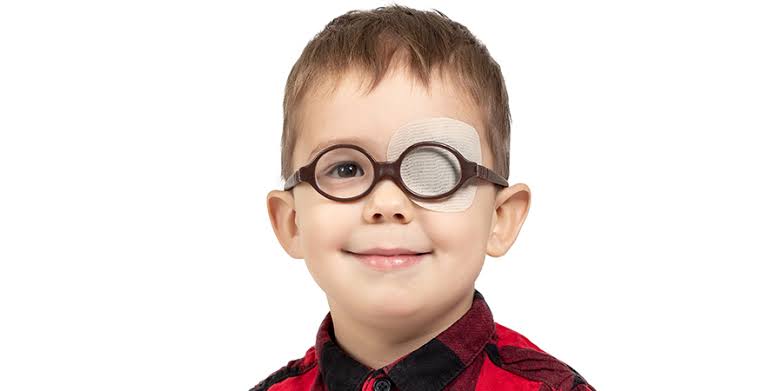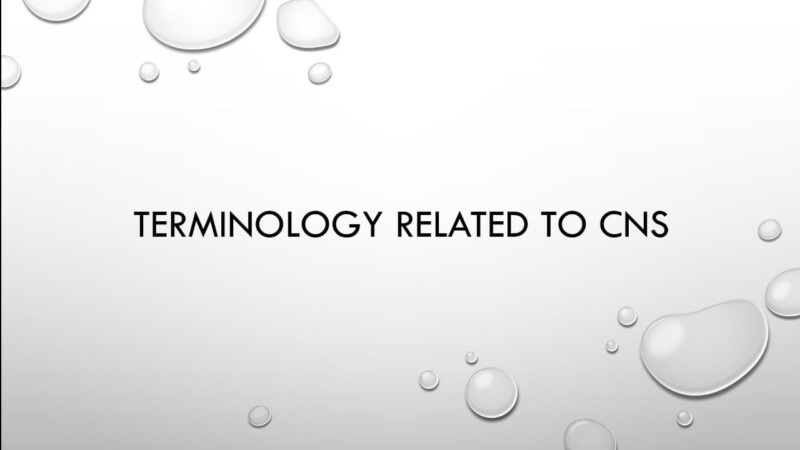•Ambylopia– When nerves pathway of eye doesn’t develop properly then one eye becomes lazy in seeing object and then the brain start seeing from the healthy eye this causes weakness of eyesight from the other eye this condition occurs in early childhood.This can be treated by covering the healthy eye so that brain is forced to see from the lazy eye and so after some time lazy eye becomes normal.

•Anomia (nominal aphasia)- Unable to tell the name of object because patient is unable to recall it.
•Amnesia– Memory loss
•Aphasia– Speech disorder that affects the patients ability to communicate
•Alexia– Reading power Decreases
•Agraphia– Loss in ability to write
•Acalculia– Loss of ability to perform simple calculations
(All of above three are due to some disease in wernicks area,cingulate area)
•Ataxia– Lack of muscle co-ordination,control of voluntary movements resulting in difficulty with balance and walking.
•Apraxia– Person fail to do daily routine work like patient suddenly is unable to tie his shoe laces.
•Athetosis– It is a slow, continuous,Involuntary writhing movement.
•Anterograde amnesia– It is like short-term memory loss ex.Patient doesn’t even remember that what he have eaten in lunch,even if asked after few hours of lunch.
•Bitemporal hemianopia– Partial blindness where vision is missing in the temporal side of of both the left and right eye.It occurs mostly due to the lesion in optic chiasma, or due to pituatry adenoma causing compression on optic chiasma.
•Chorea– Dancing movement like Involuntary, unpredictable body movement occurs while doing a voluntary movement ex. A person moving his hand towards an object and suddenly the zigzag movement occurs in his hand.
•Convulsion– Is a special type of sezuire (Generalised tonic clonic seizure)
•Dimentia– Higher function loss
•Dysarthria– Slurred speech due to weakness in muscle used for speech
•Dysphagia– Difficulty in swallowing
•Dysphonia– Simply means hoarseness of voice
•Diplopia– Means double vision i.e seeing two images of a single object.
•Diaodochokinesia– Ability to perform alternate movements in a fast and repeated manners.This is a test performed to see the functioning of cerebellum.
•Delirious– In coma case if patient is delirium means if we call the patient or touch him then he will become violent.
•Disinhibited behaviour- Actions which seem rude,offensive,manner less ex. Patient start drinking water from the same glass from which doctor was drinking.
•Delusional parasitosis– Patient start complaining of some parasite infestation in his body even when their is no such infestation.
•Epilepsy – Recurrent episodes of seizures.
•Euphoria– Feeling of extreme happiness.
•Hemiplagia– Paralysis of one side of the body
•Hemiparesis– Weakness of muscles of lateral half body
•Hemianopia– Loss of sight in half of your visual field
•Hemianesthesia– Sensation loss in lateral half of the body
•Homonymous hemianopia– Condition in which patient sees only one side (right or left) of the visual field from each eye.
•Intention tremor– Involuntary,rhythmic muscle contractions as oscillations,that occur during a purposeful voluntary muscles.
•Micropsia– Objects seems to smaller than the normal size
•Narcolepsy– Sleep disorder characterized by excessive day time sleep
•Nystagmus– Involuntary eye movement whether it’s side to side,up and down or in a circle
•Praxis– When a skilled movement is performed normally like Child is able to tie show lace this is the praxis i.e skilled movement
•Prosopagnosia– Inability to recognise familiar face
•Resting tremor– Tremors which occur only at rest once the person start doing any work the tremor stops.Often these Tremors are seen in hands/fingers.
•Retrograde amnesia– It is like long term memory loss ex. Patient doesn’t remember about his past like he doesn’t remember that in which school he studied or he (if married) doesn’t remember the name of his children
•Scotoma– A spot in the visual field where vision is deficient or absent
(Scatoma is different, it means a fecal mass in the colon or rectum that gives the appearance of tumor on palpation)
•Squint/Strabismus– Condition where boththe eyes point in different directions,more common in young children.
•Stupor– Condition of coma in which when we shake the body of unconscious patient then he will respond you.
•Stereognosis– Identification of objects merely by touching and feeling.
•Seizure– A single episode of fits
•Syncope– Temporary loss of consciousness usually due to low percussion to brain
•Tinnitus– Ringing of ears
•Tardive dykinesia- Repetitive, Involuntary movements mostly on face like grimacing and eye blinking.
•Utilisation behaviour– When the patient start using the objects like patient took the pen from doctor’s table and start using it.
•Visual agnosia– Inability to recognise and identify objects or persons.
•Vertigo– A sense of spinning dizziness it feels that you are moving when you actually are not.
Contributor- Medico Anant Singh Nanda




